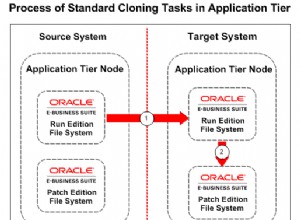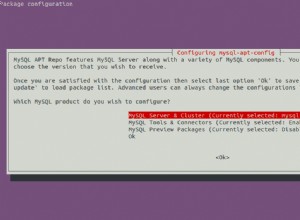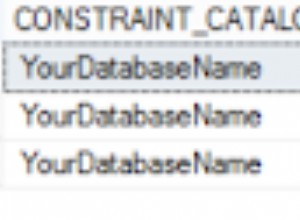Using filesort non è necessariamente una cosa negativa. Il nome è un po' fuorviante. Sebbene contenga "file", non significa che i dati siano scritti ovunque sul disco rigido. È ancora appena elaborato in memoria.
Dal manuale :
Capisci perché questo accade nella tua query, giusto? L'uso di questo tipo di sottoquery è di cattivo gusto poiché è un dipendente sottoquery. Per ogni riga nella tua app tabella viene eseguita la sottoquery. Molto brutto. Riscrivi la query con un join .
select app.id,
gp.dateup
from app
join gamesplatform_pricehistory gp on gp.id_app = app.id
where app.id > 0
and gp.country = 1
and gp.dateup = (SELECT MAX(dateup) FROM gamesplatform_pricehistory smgp WHERE smgp.id_app = gp.id_app AND smgp.country = 1)
;
Questo utilizza ancora una sottoquery dipendente, ma explain sembra molto meglio:
| id | select_type | table | type | possible_keys | key | key_len | ref | rows | Extra |
|----|--------------------|-------|-------|---------------|---------|---------|----------------------------|------|--------------------------|
| 1 | PRIMARY | app | index | PRIMARY | PRIMARY | 4 | (null) | 2 | Using where; Using index |
| 1 | PRIMARY | gp | ref | id_app | id_app | 5 | db_2_034bc.app.id,const | 1 | Using where; Using index |
| 2 | DEPENDENT SUBQUERY | smgp | ref | id_app | id_app | 5 | db_2_034bc.gp.id_app,const | 1 | Using index |
Un altro modo per riscriverlo, sarebbe questo:
select app.id,
gp.dateup
from app
LEFT join
(SELECT id_app, MAX(dateup) AS dateup
FROM gamesplatform_pricehistory
WHERE country = 1
GROUP BY id_app
)gp on gp.id_app = app.id
where app.id > 0
;
La spiegazione sembra ancora migliore:
| id | select_type | table | type | possible_keys | key | key_len | ref | rows | Extra |
|----|-------------|----------------------------|-------|---------------|---------|---------|--------|------|--------------------------|
| 1 | PRIMARY | app | index | PRIMARY | PRIMARY | 4 | (null) | 2 | Using where; Using index |
| 1 | PRIMARY | <derived2> | ALL | (null) | (null) | (null) | (null) | 2 | |
| 2 | DERIVED | gamesplatform_pricehistory | index | (null) | id_app | 13 | (null) | 2 | Using where; Using index |
Ed ecco una versione in cui non hai alcuna subquery dipendente:
select app.id,
gp.dateup
from app
left join gamesplatform_pricehistory gp on gp.id_app = app.id and country = 1
left join gamesplatform_pricehistory gp2 on gp.id_app = app.id and country = 1 and gp.dateup < gp2.dateup
where app.id > 0
and gp2.dateup is null
;
Funziona così:Quando gp.dateup è al massimo, non c'è gp2.dateup .




